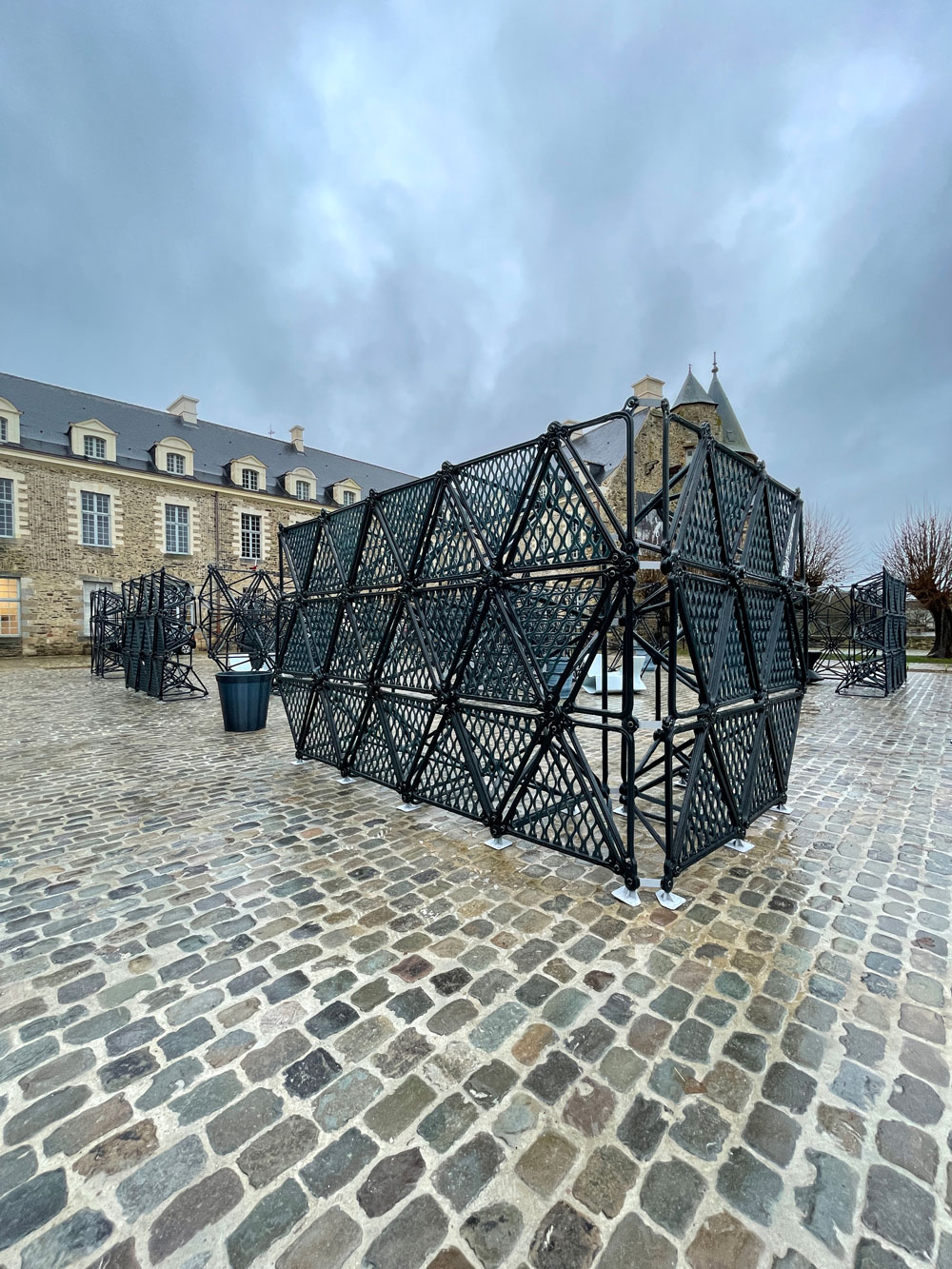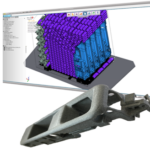A 3D printed labyrinth has been erected in the medieval town of Chateaugiron, in the north-west of France, marking the first time that a printed space frame has been assembled in an historica public place.
The installation, named as the Labyrinth of Chateaugiron, consists of around 3000 printed panels, as reported on the Parametric Architecture website.
Recycled Geodesic Structure
The panels have been designed according to Buckminster Fuller’s concepts of geodesic structures. Fuller’s modular geodesic system is a method of creating 3D structures using a repeating pattern of equilateral triangles, and you can see them forming part of the labyrinth in the image below.

The geodesic dome is one of the most well-known examples of Fuller’s system, and it is created by piecing together multiple triangular modules. The modular nature of the system makes it ideal for 3D printing, as the triangles can be precisely manufactured and assembled to form a single, seamless structure that is strong, lightweight, and complex.
Eco-friendly
When creating structures using the modular geodesic system, the 3D printing process can be optimized for efficiency and strength. The use of equilateral triangles provides a symmetrical and balanced structure that is capable of distributing stress evenly. This allows for the creation of large structures with a minimal amount of material, making it an eco-friendly and cost-effective method of 3D printing.
The labyrinth modules were printed using the recycled plastic from 4,500 water containers,making the entire structure even more eco-friendly.
The printed panels were designed by architect and design lab Bits to Atoms, and manufactured by Post Industrial Crafts (both based in Beirut, Lebanon). They were printed with a robotic arm, with what appears to be a pellet or flake extruder, as you can see in the image below.

The labyrinth has been designed so it can be assembled by the public, and so it is a constantly changing configuration. After the labyrinth is used for an event, it can be moved around and reconfigured, thus providing a fresh experience for visitors each time the configuration is renewed.
The grid-like structure has been designed as such so that it complements the surrounding medieval architecture, and does not obscure the buildings. The designers have also printed other artifacts using the same materials as the geodesic labyrinth and have dotted them around the courtyard, as you can see in the picture below.

The grid consists of three types of geometry, being a hexagonal segment, the edge of a tetrahedron, and a segment of an equilateral triangle, and the larger trusses come in four configurations that are shaped like the letters I, L, T and U (when viewed from above). This allows for a multitude of easily configurable labyrinth options.
You can see these elements explained in this graphic.
So if you happen to be in Brittany in the not-to-distant future, then perhaps head on over to the wee commune of Châteaugiron and feast your eyes on the printed geodesic labyrinth for yourselves.
And if you can’t make it to France, then you can go and check out the original article, with more photos of the installation, over on the awesome Parametric Architecture site.









